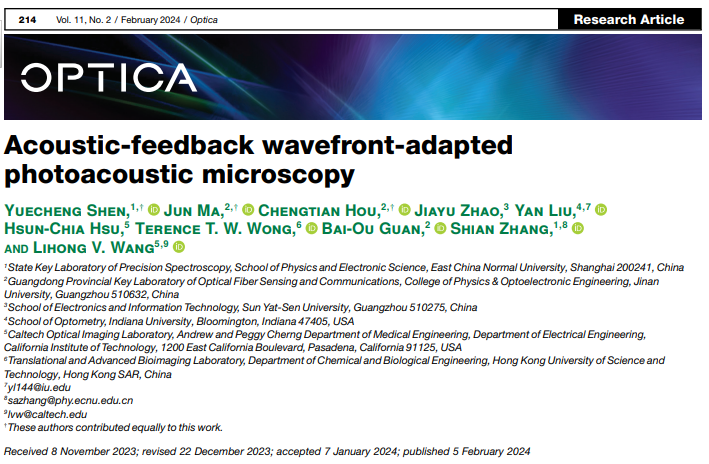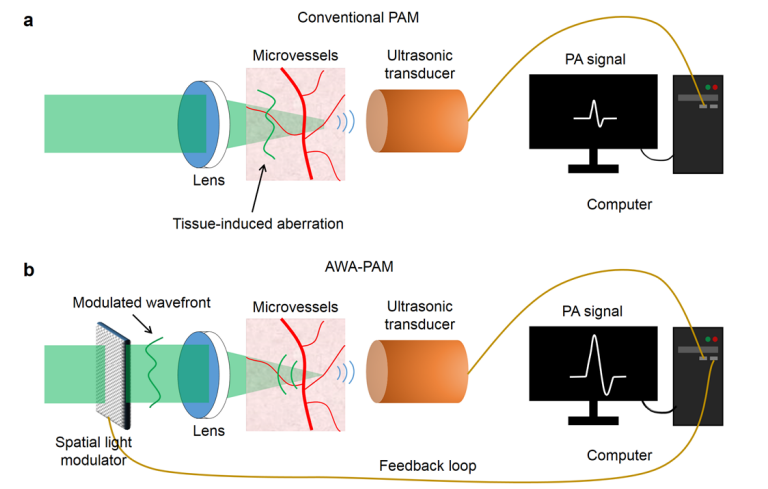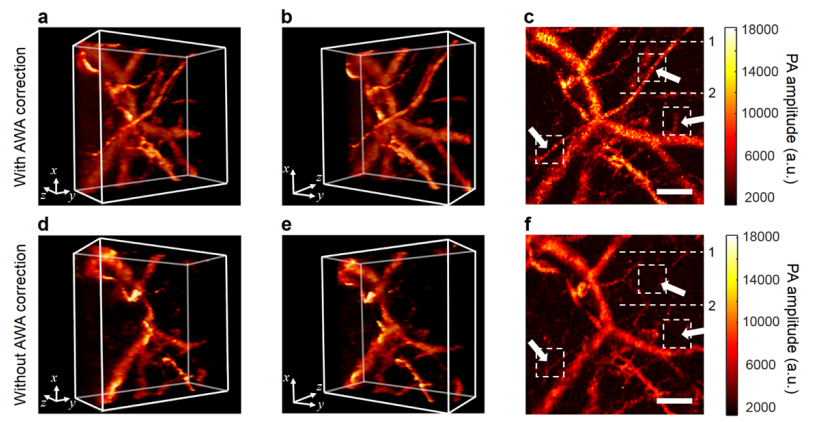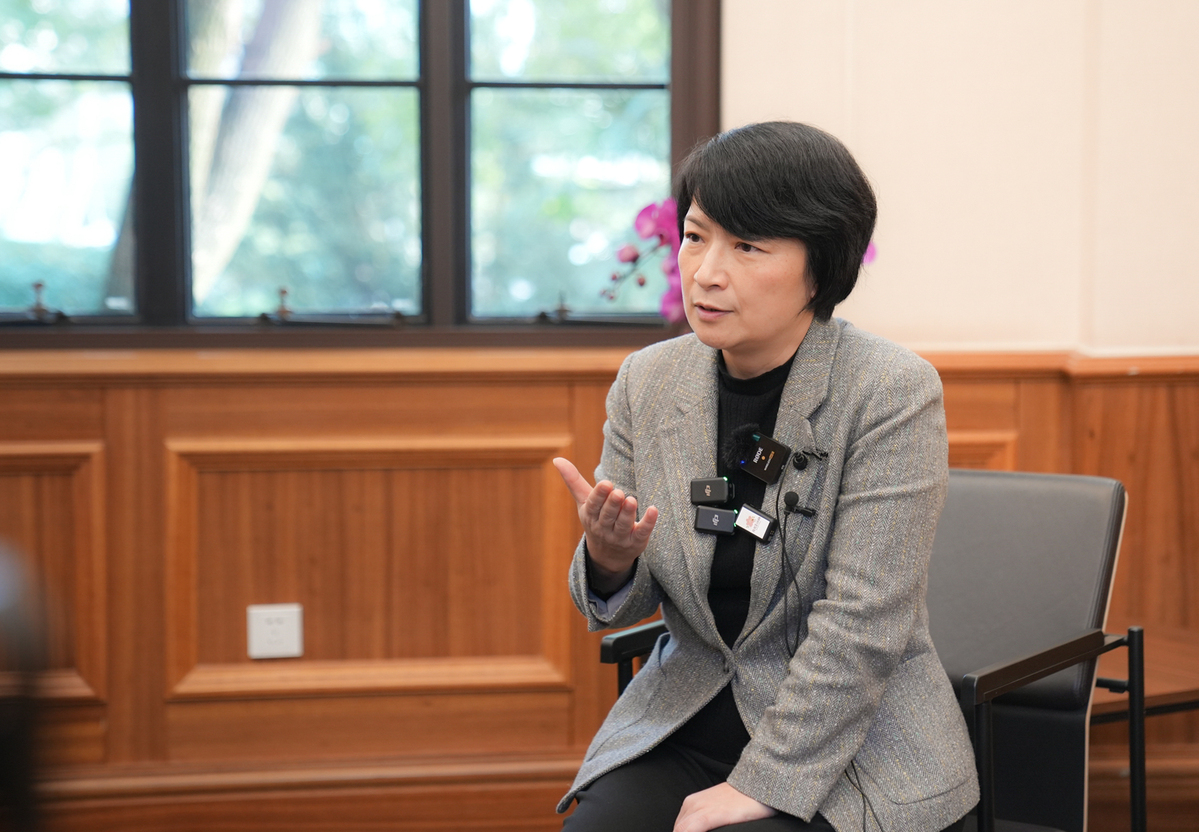# Hot Search #
The research team led by Professors Shian Zhang and Yuecheng Shen from the State Key Laboratory of Precision Spectroscopy at East China Normal University has made significant strides in the field of photoacoustic microscopy imaging. Addressing the challenge of reduced imaging resolution due to optical aberrations in photoacoustic microscopy, the team has developed an adaptive optical technology capable of effectively correcting these aberrations to restore imaging resolution. By utilizing ultrasound signals as a feedback mechanism, they successfully achieved three-dimensional imaging of live specimens such as zebrafish and mouse ears, demonstrating significant effectiveness in correcting optical aberrations caused by non-uniform biological tissue. The relevant findings were published online on February 5th under the title "Acoustic-feedback wavefront-adapted photoacoustic microscopy" in the journal Optica.

Research findings by the team of Professors Shian Zhang and Yuecheng Shen have been published online in Optica.
Optical microscopy plays a crucial role in various scientific and engineering disciplines. Photoacoustic (PA) microscopy (PAM) is a significant technique within this domain, utilizing non-ionizing photons and low-scattering ultrasound for molecular imaging. However, the inherent heterogeneity of biological tissue introduces distortion to the optical wavefront, leading to optical aberrations as light propagates through. The performance of Optical-Resolution Photoacoustic Microscopy (OR-PAM) is heavily dependent on the excitation focus quality, resulting in inevitable degradations in both PA amplitude and spatial resolution when imaging at greater depths. Despite these challenges, the application of adaptive optics to correct tissue-induced aberrations in OR-PAM has not been demonstrated. This limitation may arise from the absence of suitable guide stars in PAM.

The principle of aberration correction in the wavefront-adapted photoacoustic microscopy
To address this gap, the research team introduced Acoustic-feedback Wavefront-Adapted Photoacoustic Microscopy (AWA-PAM), utilizing acoustic feedback to rectify tissue-induced optical aberrations in Optical-Resolution Photoacoustic Microscopy (OR-PAM). The system dynamically compensated tissue-induced aberrations point by point by optimizing the phase map displayed on the spatial light modulator through a greedy algorithm. The subsequent section demonstrates that AWA-PAM effectively corrects tissue-induced aberrations during in vivo imaging of zebrafish embryos and mouse ears, resulting in a substantial improvement in image quality. This enhancement reveals microstructures that are indiscernible with conventional PAM. The research team envisions that AWA-PAM will prove beneficial to the in vivo imaging community and emerge as a crucial tool for label-free optical imaging in the quasi-ballistic regime.

The imaging of mouse ears obtained after aberration correction by the wavefront-adapted photoacoustic microscopy system.
This research was a collaborative effort involving Professors Shian Zhang's and Yuecheng Shen’s team from East China Normal University, Professor Bai-Ou Guan's team from Jinan University, Dr. Yan Liu from Indiana University Bloomington, and Professor Lihong Wang's team from the California Institute of Technology. East China Normal University served as the primary institution for this study, with Dr. Yan Liu, Professor Shian Zhang, and Professor Lihong Wang acting as co-corresponding authors. Additionally, Professor Yuecheng Shen from East China Normal University, Associate Professor Jun Ma from Jinan University, and doctoral candidate Mr. Chengtian Hou shared the position of co-first authors on the paper.
Paper Link:
https://opg.optica.org/optica/fulltext.cfm?uri=optica-11-2-214&id=546305
Source: State Key Laboratory of Precision Spectroscopy

















